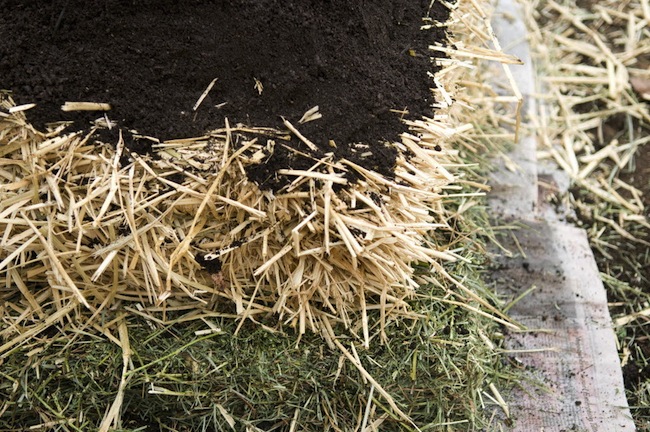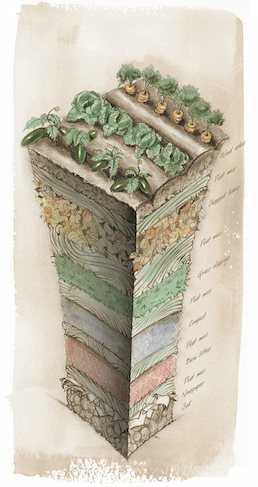

We may earn revenue from the products available on this page and participate in affiliate programs. Learn More ›
Mulching has its rewards: Not only does it give you richer and more nutritious soil, but it can also suppress weeds, enabling gardeners to use fewer chemicals and spend less time in the dirt. So how do we fully embrace the power of mulch? For some, the answer has been to construct a multilayered soil system.
Intimidating as that may sound, a technique known as lasagna gardening, or sheet mulching, provides an easy and rewarding way to get started, whether you’re establishing a new landscape or enhancing last year’s. Begin now, and come springtime you will have a healthy environment for your plants.
STEP 1
Place compost or manure directly over the grass (or patches of weeds) on your property. Rich in nitrogen, this material will stimulate the soil, readying it to sustain new life. It’s recommended that you obtain a soil analysis to help you identify your soil’s deficiencies and determine whether it would benefit from supplements.

STEP 2
Lay down a barrier to prevent the germination and emergence of weeds. Use anywhere from two to five inches of organic material—cardboard, newspaper, and natural-fiber carpeting are common choices. Make sure that it covers the entire area, and as you’re adding the material, give it a good soaking.
STEP 3
Over the weed barrier, lay down another layer of compost, this time one that includes a mix of nitrogen-rich organic matter (for example, grass clippings, decaying leaves, or seaweed). Important: Make sure that these scraps do not contain weed seeds, because if they do, you may be jeopardizing the work you have done so far.
STEP 4
Finally, add about three inches of mulch—wood chips or pine bark. It will need replenishment over the season, but one of the great benefits of the lasagna gardening system is that there’s no tilling necessary.
What you end up with is a soil that emulates the fertile floor of the rainforest, perfectly balancing layers of decaying material and barriers to weed growth. Perhaps best of all, you reap the benefits of this productive substrate while performing only minimal maintenance.
